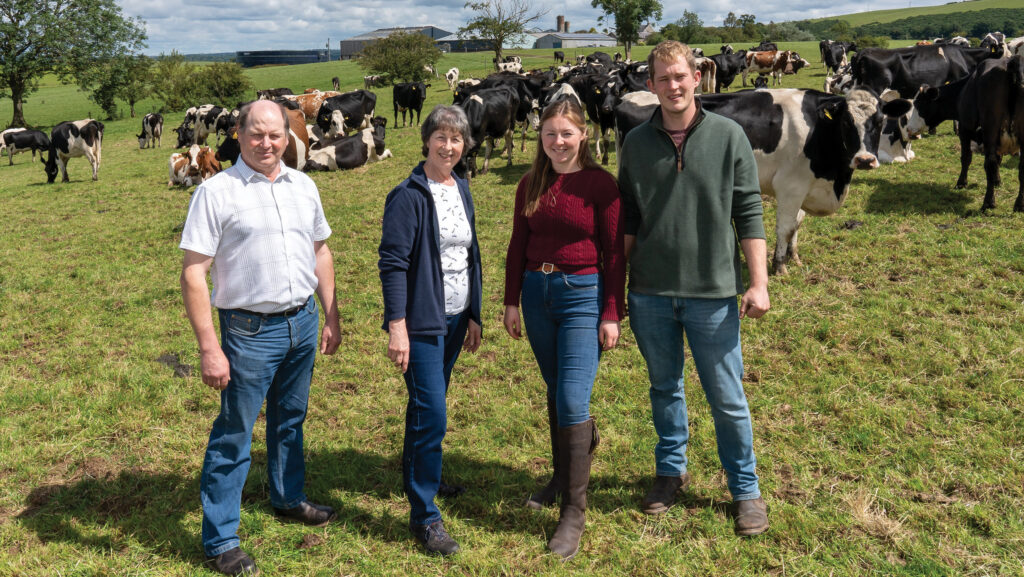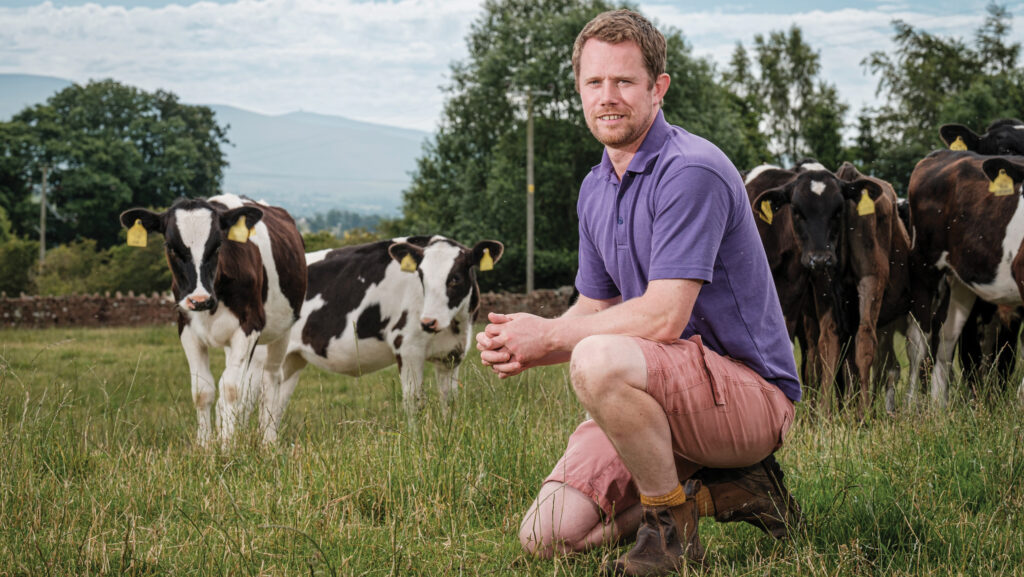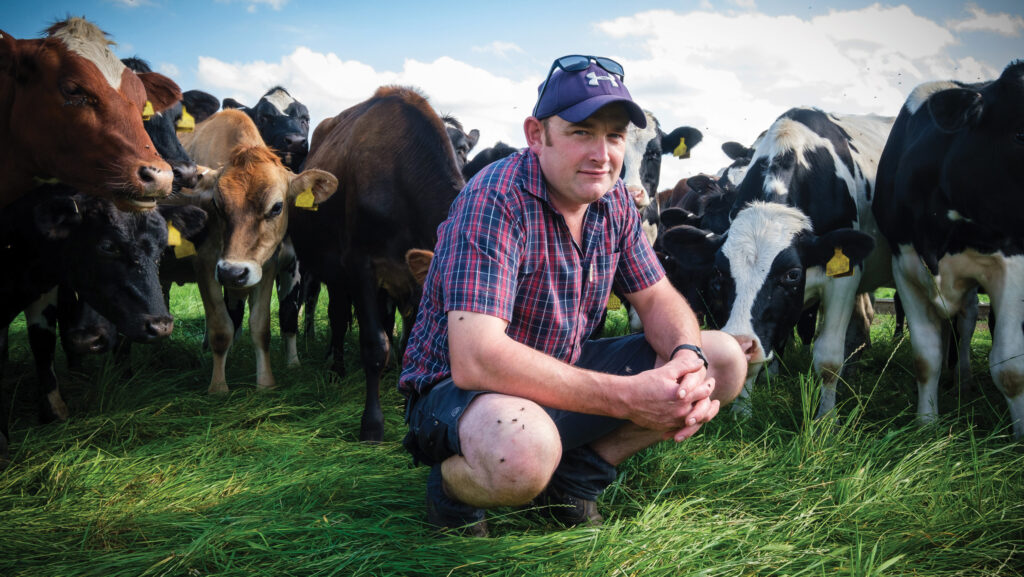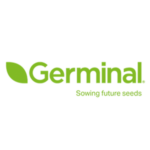Farmers Weekly 2024: Grassland Farmer of the Year finalists

Working within the constraints of people and place were strong themes this year. All three finalists had managed to make a grass-focused system work within unique conditions.
Finalists
- The Baird family, Auchnotroch Farm, Lanarkshire
- James Tweedie, South Dyke Farm, Cumbria
- Ben Walker, Hall Farm, Norfolk
The Judges
- Emily Grant – Perthshire sheep farmer and independent grassland and livestock consultant Emily runs Forritt Consultancy.
- John Ritchie – FW‘s 2023 Grassland Manager of the Year, John runs an upland grassland sheep and beef farm near Perth.
- Michael Priestley, FW’s livestock reporter has been writing about grassland systems across the UK and further afield for more than a decade.
See also: Farmers Weekly Awards 2023: Grassland Manager of the Year finalists
The Baird farmily, Auchnotroch Farm, Lanarkshire

Andrew and Marisa Baird with daughter Kirstie Morrison and husband Alasdair © Angus Findlay
Capturing the benefits of robotic milking and grazing to ease generational succession is perhaps the biggest achievement of the Auchnotroch team.
Despite naysayers, the Baird family are in their fourth summer of paddock grazing cows in an autumn-calving, robotically milked system.
During this time, the farm has increased from 180 to 200 cows, lifted milk yield by 1,000 litres to almost 8,000 litres, and bought 20ha of grassland for dry cow silage last year.
Milk solids output lifted almost 20% to 612kg a cow on the same grazing platform and 1,511kg/ha in 2023, while grassland production increased 34% to 12.93t dry matter (DM)/ha.
Pasture
Hybrid vigour ensures fertile, functional cows that can walk 1.5 miles a day to be milked.
The herd is based on Norwegian Red, Friesian and Brown Swiss breeds, with a smattering of Montbeliarde, Fleckvieh and Meuse-Rhine-Issel.
The farm, 40% of which is across the other side of the road, has been in a paddock grazing and four-cut silage system since 2010.
Most of the paddocks across the road are silaged, and grazing takes place on the farmstead side.
A fixed 21-day grazing round is supplemented with unrolled hay in times of low DM between early April and October. In winter, cows are fed chopped silage and 2kg of caustic wheat.
Cows access pasture by two tracks from the robot shed and are sent to one of two blocks each day by an automatic drafting gate.
Each 1.5ha paddock has three grazings a day, with changes at 8am, 1pm and 6pm.
Paddocks are entered at 3,400-3,500kg DM/ha and residuals of 1,400-1,500kg DM/ha are left, with Agrinet scoring utilisation at 100%.
Quality is maintained by pre-mowing the second rotation and grazing with dry cows from August.
Profit
Marrying robotic milking and rotational pasture grazing appeals to processor First Milk. Each year a regenerative plan is followed, which has secured a 0.68p/litre bonus this year.
Fertiliser use has fallen from 38kg/ha to 29kg/ha at each grazing.
Cake use – while variable – averages 8kg a cow a day indoors after a 12-week autumn-calving block starting in October, and just 3kg/day for in-calf cows at pasture.
The best yielding cow produced 11,900 litres of milk on 2.1t of concentrate, with 7,600 litres from forage. Cake is fed to a maximum of 9.5kg, which is for a 55-litre cow.
The farm relies on artificial insemination with no heat-detection technology. Cows have a low-frequency tag for robot identification.
Last year, profit a cow was £1,168 with a challenging milk price, and a feed cost of 9.36p/litre.
People
The family partnership consists of parents Andrew and Marisa Baird and daughter Kirstie Morrison; Kirstie’s husband, Alasdair, also works with them part time.
Kirstie oversees robot data and culling decisions, entering figures into an Excel spreadsheet and ranking cows on yield, calving interval and health issues.
She also measures grass every Tuesday for Grasscheck and enters the information into Agrinet.
“Above all, we want to show people that robots and grazing can work together,” says Kirstie. “Even with a main road right through the farm.”
Breeding work and foot-trimming is shared by Kirstie and Andrew, who also oversees most of the tractor work.
Marisa conducts daily routine robot maintenance and assists at calving and calf-rearing time, with seasonal help hired in when possible.
Alasdair fills in as required and, being a farmer’s son, can turn his hand to most jobs. Contractors are brought in for silage raking and chopping, hedgecutting and slurry work.
The numbers
- 3.5 Average number of lactations a cow
- 12.93 Tonnes of dry matter a hectare the farm grew in 2023
- 3.6 Average daily number of milkings in winter during housing (2.4 in summer)
- 3:1 Ratio at which slurry is mixed with digestate, which has lifted phosphate and potassium indices
- 48 Percentage of milk from forage – 3,600 litres was achieved last year
Farm facts
- 200 crossbred cows milked by four Fulwood robots
- 101ha grassland on lighter loams to heavy clay
- Supplying First Milk on a manufacturing contract
- Calves sold at eight to 10 weeks old at live markets
- 330kW wind turbine, solar panels and a biomass boiler
- Averaging 7,800 litres at 4.2% fat and 3.6% protein
Judges liked
- Business transitioning smoothly to next generation
- Blueprint for making grazing and robotics work together
- Strong handle on costs and profit
- Focus on cow fertility, mobility, and milk from forage performance
- Functional breeding programme is honing genetics
What the judges say
“Excellent teamwork and a progressive mindset have allowed grazing and robotic milking to flourish, helping the next generation deliver a living and a lifestyle. Data are used to breed optimal cows.”
James Tweedie, South Dyke Farm, Cumbria

James Tweedie © Jim Varney
Full commitment to spring block-calving has allowed James Tweedie to expand herd size, while keeping control of his cost base.
Cow numbers have increased from 270 to 400 cows since 2016. This is a 48% increase with just 15% more ground rented.
James says this is thanks to the size of his cows, which are pure New Zealand Friesian, pure Jersey and Jersey-Friesian crosses and average 438kg.
Barring labour, very little has changed on the fixed costs side, which now includes three full-time staff and two relief workers to run the farm.
James, who farms with parents Gordon and Margaret, has been growing and grazing more grass each year.
Performance has improved. The farm measured 8.4t dry matter (DM)/ha in 2015, and 13.6t DM/ha last year. In addition, since 2014, the calving block has shrunk from 16 to seven weeks.
Pasture
Half the farm is grazed on 12-hour shifts on a twice-a-day milking system. The rest is support ground, used for producing baled silage and rearing heifers and breeding bulls.
James and the team aim to enter covers of 2,800-3,000kg DM/ha and leave a residual of 1,400-1,500kg DM/ha without pre-mowing.
Leys are high-sugar ryegrass mixes with clover. Some have had plantain broadcasted on, and growing one field of herbal leys has convinced James to put 20% of the farm into herbal leys this year.
The fertiliser and slurry spreader follows cows after each round, although chemical nitrogen use has fallen from 180kg/ha to 135kg/ha since 2015.
In September and October, the team manages the last round by closing paddocks at 2,250kg DM/ha to build covers up to 2,400kg DM/ha over winter.
Profit
James is fortunate that cows can graze for 280 days or more on the free-draining Eden Valley soils, maximising milk from grazed grass.
This means cows only require 400-600kg of a 12% crude protein parlour cake and 500kg of silage DM in the lactation, with a maximum of 1.5t of silage a cow used overall in the dry period.
The silage budget includes bales fed to supplement 6ha (15 acres) of fodder beet, which feeds the fittest half of the herd.
First calvers are housed with cows with a lower body condition score, and older cows in a 250-space cubicle shed and three Dutch barns, inside which calving takes place from early February.
James is keen to get cows turned out as soon as possible.
“We only housed for two days in February and March this year,” he explains.
“We would rather put up fences in snow than house cows. As soon as we have 20 or so cows calved, they head outside if ground conditions allow.”
People
James and his father, Gordon, effectively count as one full-time labour unit, with four staff members employed through the year.
One senior role involves running the machinery work and day-to-day organisation of the farm, while another is focused on grass management, weekly grass measuring, and the cows.
Breakfast meetings take place every Monday. James also holds individual supervisory sessions to talk through people’s training, career goals, business aims and management adjustments.
Employing two regular milkers means James can be a North Lakes Arla representative and take on a more strategic farm manager role.
“We don’t necessarily look for farming experience,” he says. “They just need to be keen, positive and easy to get on with.”
Staff are given a 55-hour week on a 12-and-two rota, giving them every other weekend off. During spring calving, a six-and-one rota is followed.
The numbers
- 2.5 Average paddock size (ha), varying from 0.5-7.5ha
- 30 Number of Jersey cross Friesian bulls are sold annually, along with 15 Friesians and 15 Jerseys
- £1,250 Average price of a dairy bull at 14 months old
- 438 Average liveweight of cows last year, which produced 456kg of milk solids
Farm facts
- 400 spring-calving cows
- 250ha, of which half is on an Agricultural Holdings Act tenancy
- Average lactation 4,500 litres
- Friesians average 8.5-9% milk solids
- Milk sold to Arla
- 60 breeding bulls and surplus heifers sold annually
- Light, stony, free-draining soil
- 900mm rain/year
- Embryo transfer work done in elite cows
Judges liked
- Good solids production from small cows
- Adding value through breeding stock
- Low-cost and time-efficient system
- Accepting benefits and limitations of farm
- Conscious of the importance of staff
The judges say
“James’s focus on low-cost milk production has kept the wintering costs and fixed-cost base of the enterprise low, and has meant adding value from livestock sales is high margin.”
Ben Walker, Hall Farm, Norfolk

© Jason Bye
Aiming for efficient forage-based milk production from Norfolk’s light land and dry climate has driven Ben Walker to develop a resilient autumn-calving system.
Expecting 600-650mm of rainfall in a “normal year” and grassland dry matter (DM) production at 6-11t DM/year brings challenges.
In dry years, the herd can be dried off early, and maize hopefully yields well.
Ben took over a 160-cow herd of all-year-round calving Holsteins producing 11,000 litres off 4.1t of concentrate in 2011.
Since then, he has lifted milk from forage to 53% and concentrate use has fallen to 1.8t.
A greenfield dairy site was completed in October 2023 after selling 22ha of ground with planning permission and taking in 60ha of land from the arable unit.
Now the milk herd totals 300-head.
Pasture
Cows are typically out by day from mid-February and out day and night by late March. Grass quality is maintained early in the season by pre-mowing in May.
Cows enter covers of 2,800-3,200kg on a mix of 12-, 24- and 36-hour paddocks to leave a 1,500kg residual, typically peaking at 30 litres/day on an average feed rate of 0.26kg/litre.
Ben has drilled leys with a bespoke Aber grass and clover mix comprising an intermediate diploid and tetraploid, and a late diploid and tetraploid, with two white clovers (Aberswan and Aberherald).
The farm will begin a SAM3 herbal ley drilling campaign this year to increase rooting depth and drought tolerance.
Dirty water harvesting on the new yard will irrigate all 37 fields on the grazing platform next year.
Pastures are recorded on Agrinet data and the worst performing 5-10% of paddocks are reseeded each year.
In August, cows are dried off on standing hay and 2kg a cow a day of dry cow rolls are introduced three weeks pre-calving.
Straw or hay can be added if dry weather has limited grass growth or if standing hay is too lush.
Profit
Average cow weight is 555kg and dry matter intakes hit 15kg DM/day at peak lactation.
Silage is fed in a self-feed system, requiring only a scraper tractor through the winter. About 3,000t of silage (grass and maize) are made annually.
Cows are wintered in cow kennels from late October on home-grown chopped straw. Bulling heifers are trained on cow kennels in their first winter.
Straw demand has fallen from 4,500 round bales on 160 cows when the cows were housed in loose yards, to 2,500 bales on 180 cows as more days were spent at grass, and is now just 550 bales on 300 cows, making the farm self-sufficient in straw.
Muck supplies the arable unit, which is run by Ben’s brother, Tim.
Latest costings for 2023 showed a total power and machinery cost of 4.2p/litre, a veterinary and medicine cost of 0.75p/litre and a total feed cost (including minerals and rented heifer grazing ground) of 14.76p/litre.
People
Ben’s passion is cows, while brother Tim enjoys arable farming and tractor work, and being a mixed farm allows each brother focus.
Father Ian is semi-retired and remains a useful source of experience and advice.
Ben’s role is strategic, overseeing the development of the new site.
He measures grass every Monday morning, does both milkings on Thursdays and makes the breeding decisions, trying to involve the team as much as possible.
Two herdsmen manage the milking of the cows daily on a five-day week, with alternate weekends off.
Ben’s wife, Lucy, works off-farm three days a week and manages the stock control and social media for the farm’s vending machine outlet.
The numbers
- 3.5 How many labour units the farm requires (four at calving)
- 38 How many hectares the dairy grew by to add 120 cows
- 2 Silage (t dry matter) budgeted a cow a year
- 7,214 Litres/ha from forage produced on farm
- 30,000 Litres of milk sold through the vending machine in 2023
Farm facts
- 300 autumn-calving crossbred cows
- Norwegian Red, Holstein-Friesian and Jersey cross
- 108ha grassland and silage ground and 46ha maize
- Lactation averages 7,000 litres at 4.6% butter fat and 3.6% protein
- Farmed alongside arable enterprise
- Nine-week calving period
- On-farm milk and milkshake vending machine plus local food retail
Judges liked
- Producing healthy profits in a challenging environment
- Flexible grazing plans when faced with hugely variable dry matter production
- Low fixed costs in new dairy with self-feed silage
- Low depreciation cost
- Arable and livestock integration brings resilience
- Evidence-based reseeding [delete?]
- Thoughtful approach to staff management [delete?]
What the judges say
“Ben’s use of paddock grazing and self-feed silage captures the advantages of his location, while autumn calving and arable integration manage the challenges. Costs are controlled and value is being added.”
A word from our sponsor 
“Germinal develops climate-smart forage products, and we congratulate the finalists on their management of resources, applied knowledge and commitment to achieving great results.”
Paul Billings, managing director, Germinal
